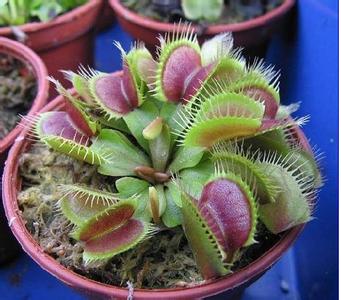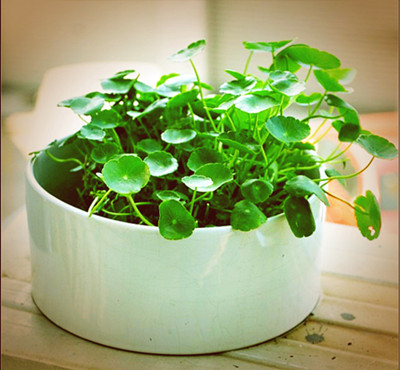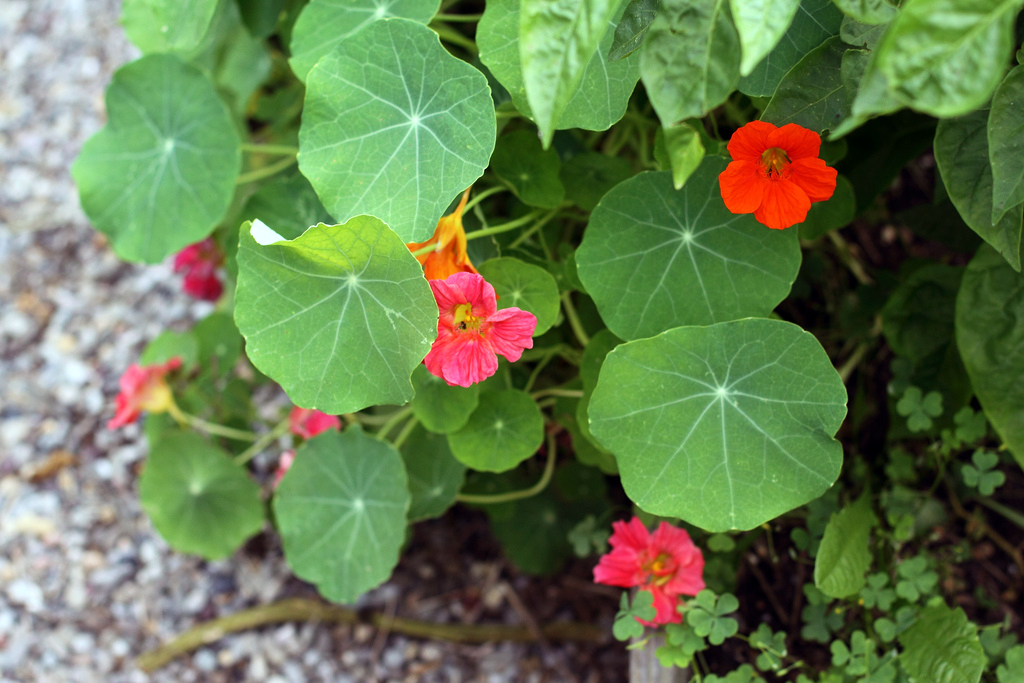Cultivation methods and techniques of flycatcher
Flytrap is a popular insectivorous plant with complete roots, stems, leaves, flowers and seeds. Its leaf is the most important and obvious part, which has the function of preying on insects, obvious spiny hairs and red sessile glands, and looks like a big □ with teeth and claws. Potted plants can be used for sunny windowsills and balconies, and can also be specially used for planting trough cultivation. Flytrap is known as the carnivorous plant in nature. The question of how to plant flycatcher is very confused. here are the secret books of flycatcher planting in the field of flower friends sorted out by Xiaobian. Please continue to look down.

Secret book: use a deep basin
According to the experience of + years of experience, (serious friends can ignore it), the roots of the catch hardly develop horizontally, they go down in the same direction!
The deep basin gives them room for development! If the roots are well developed, it will be easy to catch and raise them to a large size.
And the advantage of deep basin is not only here. As we all know, the water content of each soil layer is different, and the thicker the soil layer is, the more different the water content is. As the height of the deep basin increases, there is more room for the root to choose suitable water. Roots of different lengths can provide plant needs at different levels according to their own needs.
At the same time, it also increases the heat dissipation area of the basin wall, which is especially helpful for catching through the summer. in this way, relatively stable moisture and soil temperature are absolutely beneficial to the growth of capture. My hands are sore, it's really hematemesis!
Secret book: the surface is covered with moss
See this secret book, someone must disdain to hum-sound: what kind of secret book is this? Don't worry, listen to me slowly. Go and make a cup of tea first.
Make it short! There are three advantages.
-: moisture. After planting moss, the area of evaporating water must be larger than that of the basin, and the humidity of the air around the plant is also greater.
At the same time after rain, or just after watering. When there is too much water in the basin soil, it can also help absorb and volatilize. When the basin soil is dry in the sun, it can also cover the basin soil with shade and keep it wet. So someone asked, is it not good to use water moss? Stupid! My arrest is about extensive wild breeding. Can the delicate water moss compare with the mountain sister's moss? How to raise fly-catching grass at home, the most complete cultivation skills of fly-catching grass
As we all know, there are many amazing plants in nature, and flytrap is one of them. In fact, there are many insectivorous plants such as flytrap in nature, and their appearance is not very good-looking. Coupled with their insectivorous characteristics, many people do not like them very much. But its insectivorous ability is very strong, so sometimes people will still raise one or two plants. So how to cultivate flytrap? Now let's take a look at it together.
Brief introduction of flytrap
Flytrap, also known as Venus flytrap, Cordyceps sinensis, Cordyceps sinensis, fly hell, ground pearls or traps, etc., is a perennial herb of the genus Linnaeus, but also an insectivorous plant. It is native to North America, its shape is like a large open mouth, the edge of its leaves have many regular eyelashes, with flies as the main food, known as the natural carnivore. The shape of the flytrap is quite chic, some people call it a fly trap of Venus, its ability to catch flies is very strong, so there are still many people like it, it is currently the most beloved insectivorous plant in China.
Cultivation techniques of flycatcher
1. Lighting
The fly-catching prairie is a kind of swamp plant, so there is a great demand for sunlight. When raising at home, we need to pay special attention to its light conditions, which is similar to that of ordinary insectivorous plants. Because they all rely on their own leaves to catch insects, and whether the leaves are healthy or not and the bright and dim color have a lot to do with the light. So usually when breeding at home, you can put it on the edge of the balcony, let it fully enjoy the light, and carry out photosynthesis, if the light is not enough, it is necessary to supplement light with plant light. However, it should be noted that the hot summer sun is too strong to be exposed all day.
2. Moisture
In fact, the requirement of water content of flytrap is not very high, pure water, Rain Water or clean tap water can be chosen to irrigate. Pot immersion can be adopted when watering, regularly replenish water for plants, but water should not be too much, especially in summer, too much water is easy to cause waterlogging, and the roots of plants are prone to rot.
3. Humidity
Flytrap requires relatively high humidity in the air, generally more than 50%. If the air humidity around the plant is moderate, the plant can also grow more robust, and this humidity is also related to the non-predation ability of the plant, so it's still important. Usually, you can spray some water mist into the air around the plant to increase the air humidity, but the humidity is not too high, more than 50% is fine.
4. Temperature
Fly-catching grasslands are found in North America, and the temperature requirements are still high. the temperature for their growth is between 15 and 35 degrees Celsius, and the suitable temperature is between 21 and 35 degrees Celsius. In winter, when the temperature is about 5 degrees Celsius, the plant will fall into a dormant state, if the temperature is too low, the plant may be frozen.
5. Fertilization
Usually, this insectivorous plant can catch insects and eat on its own, so there is no need to increase fertilization. But sometimes the root system of the plant is salt-intolerant and nutrient-deficient, so you can apply some low-concentration liquid fertilizer to its leaves, once every two weeks.
Conclusion: although the flytrap does not look particularly loving and beautiful, its ability to catch insects is excellent, so we can still raise some at home, and its cultivation is relatively simple, everyone can try to raise some.
How to water the flytrap, the maintenance skills of the flycatcher waist water method / two kinds of wild release and stuffy culture.
Flytrap is a kind of plant that can repel mosquitoes. Keeping it indoors can not only eliminate flies in the home, but also purify the air. But it is not easy to raise the flytrap well, and the most important thing to pay attention to is watering. How to water the flytrap? The following is the flycatcher waist water maintenance skills and fertilization methods, follow the editor to have a look.
First, how to water the flytrap and waist water
Unlike other indoor potted plants, watering the flytrap is not directly watered with a kettle, but with waist water, which has been mentioned in the flytrap culture method. However, the waist water method has two problems, one is that the roots are easy to rot at high temperature in summer, and the other is the accumulation of minerals over a long time. In order to solve these two problems, let's take a look at the maintenance techniques of fly-catching grass waist water method.
Maintenance skills of fly-catching grass waist water method
Before understanding the maintenance techniques of flycatcher waist water, it is necessary for us to know the growth habits of flycatcher. It is understood that the fly-catching prairie grows in swamps and is often exposed to strong sunshine for a long time. At this time, the temperature of the ground will continue to rise, and a large amount of water will evaporate from the ground to the ground, but at the same time, because the underground temperature is lower than the ground, the cool moisture will take away the heat from the roots of the plant.
After the heat is taken away, the phenomenon of rotting roots of the fly-trapping grass will not appear. After understanding this habit of the flytrap, the flycatcher waist water method needs to make use of this point, the method is to properly adjust the cultivation medium, we can choose the medium of water retention, air permeability, and improve heat dissipation, as follows:
1. Wild release medium
Place coarse-grained phytolith or foam blocks and sponge blocks at the 1pm 4 of the basin floor to keep ventilated while absorbing moisture. 40% medium-and fine-grained red jade soil, or 20% peat soil mixed with red jade soil, or 100% pure water moss can be added to the upper layer, which is helpful to lock in moisture and maintain humidity.
Because when released in the field, the water volatilizes very quickly, you can add 60% of medium-and fine-grained mixed gold stone or 30% of medium-and fine-grained mixed gold stone + 30% medium-grained imperial stone, waist water 1 amp 4 pots or so. If the summer temperature is above 30 ℃, it needs to be shaded by 50%, which is exposed to soft scattered light.
2. Stuffy medium
Place coarse-grained phytolith or foam block at 1x4 at the bottom of the basin to absorb moisture while maintaining ventilation and ventilation. The upper layer can use 100% pure water moss or 40% medium or fine grained red jade soil or 20% peat soil mixed with 20% red jade soil to lock in moisture and maintain humidity.
When released in the field, the water volatilizes very quickly. 60% of the medium and fine grain mixed gold stone or 30% of the medium and fine grain mixed gold stone plus 30% medium grain imperial stone can be added to it, and the waist water is less than 4 pots. Similarly, if the summer temperature exceeds 30 ℃, do not cover the container, keep the top of the container ventilated, shade 50%, and place it in a soft and bright place of scattered light.
There is another reason why the flytrap is watered with waist water: professional farmers have tens of thousands of pots in a flower shed, and how long do they have to be watered one by one, so they are all raised with waist water. And after reading the above, I believe we all know something about the maintenance skills of fly-catching grass waist water, and you can also raise it in this way.
- Prev

The skill of how to breed Codonopsis
Tongqian grass is called mushroom grass, is perennial water or wet herbs. The height of the plant is 5cm to 15cm. The top of the stem is brown. Submerged leaves with long stalks, round shield-shaped, 2-4 cm in diameter, margin undulate, grass-green. Flowers bisexual; umbels; florets white and pink. Divide the fruit. The florescence is from June to August. Its stem node is obvious,-node.
- Next

Culture methods and matters needing attention of Clematis paniculata
Sowing time: March to June, called spring sowing. The florescence is from August to December. It is also possible to sow seeds in late August or early September in autumn, which is called autumn sowing. In this way, the dry lotus will blossom during New Year's Day and the Spring Festival. Sowing and raising seedlings: the optimum temperature for germination is 18-20 degrees. On demand, cover about 1 cm of soil, water thoroughly and keep moist
Related
- Fuxing push coffee new agricultural production and marketing class: lack of small-scale processing plants
- Jujube rice field leisure farm deep ploughing Yilan for five years to create a space for organic food and play
- Nongyu Farm-A trial of organic papaya for brave women with advanced technology
- Four points for attention in the prevention and control of diseases and insect pests of edible fungi
- How to add nutrient solution to Edible Fungi
- Is there any good way to control edible fungus mites?
- Open Inoculation Technology of Edible Fungi
- Is there any clever way to use fertilizer for edible fungus in winter?
- What agents are used to kill the pathogens of edible fungi in the mushroom shed?
- Rapid drying of Edible Fungi

